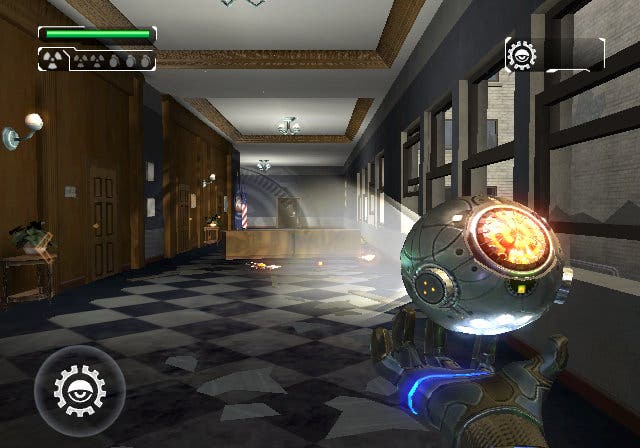The Conduit
Conduct unbecoming.
If you want to learn something about a science-fiction, alien-invasion shooter before playing it, just pay close attention to how it names its enemies. The single words developers choose to boil their interstellar or interdimensional threats down to often inadvertently reveal the character of the game beneath. Halo's Covenant and Flood conjure an aura of biblical scale and religious devotion. Half-Life 2's Combine suggests seamless integration and sleek, powerful technology. Killzone's Helghast sounds like grim, Germanic warmongering.
The alien invaders in Wii FPS contender The Conduit are called the Drudge.
What does that say to you? Thankless, plodding toil, a dearth of imagination, a dry and dogged adherence to convention? Something grey, unvaried, undistinguished, average? Right on all counts, unfortunately. The rule holds true for this technically sound but desperately uninspiring shooter. Name thy enemy, name thyself.
The enthusiastic self-publicists at developer High Voltage software have long been bragging about The Conduit's format-leading graphical prowess and how its pinpoint controls would consign twin-stick first-person shooting to the bin. This was the game that would finally endear the Wii to gaming's headshot heartlands, and prove those who always suspected it could be a perfect home for the FPS right. The claims were eye-catching enough to earn publishing support from SEGA, and on-message enough to earn Nintendo's namedrop blessing. And to be fair, they were half-true.

The Conduit's pointer control is fast, precise, effortless and finely-tuned, whether by High Voltage in the excellent default setting, or yourself in the sort of frighteningly granular array of options - from deadzone to cursor-lock to motion sensitivity - that you'd expect of a late-nineties hardcore PC game. There's a decent sense of weight to your character, subtly effective camera movements, a useful semi-lock on the Z button that tracks the camera (but not your sights) on a particular enemy, and generally superior responsiveness and head control to previous standard-setter Metroid Prime 3: Corruption.
There are a few more commands than there are comfortably accessible buttons - however you configure it, you'll end up with something vital like reload a slightly awkward thumb-stretch away - but all in all, these controls are hard to fault and a joy to use. They really are a watershed proof-of-concept for the Wii's FPS capability, even if the magnitude of the achievement is mostly down to surprise that no-one else quite managed it before. And yes, pad control on other consoles, no matter how well calibrated, does seem a little clumsy after The Conduit.

The problem lies in what High Voltage asks you to do with these magnificent controls: shoot the same handful of clichéd enemies over and over again with poorly differentiated, unrewarding weapons, in repetitive and characterless locations, according to the whim of a meaninglessly threadbare and generic plot, and unburdened by considerations of strategy, tactics, options, or anything that might stir the most wavering half-mast of a raised eyebrow of interest. The Conduit might as well have been designed by an algorithm, it's so resolutely free of creativity.
Helbine (or Comghast?) troopers with glowing goggles, gurgling aliens who look like emaciated Covenant Elites, ineffectual spooks who didn't make it into Perfect Dark (the first one) and a few spindly bugs attack you in predictably stupid patterns from the other end of re-used corridors or across the occasional open space, which only seems large and exciting because of the tight confines you've been in and deja vu you've been experiencing for the previous 10 minutes. That's it, for nine none-too-long levels, before a Z-files conspiracy plot that is shockingly free of incident draws to a close.


